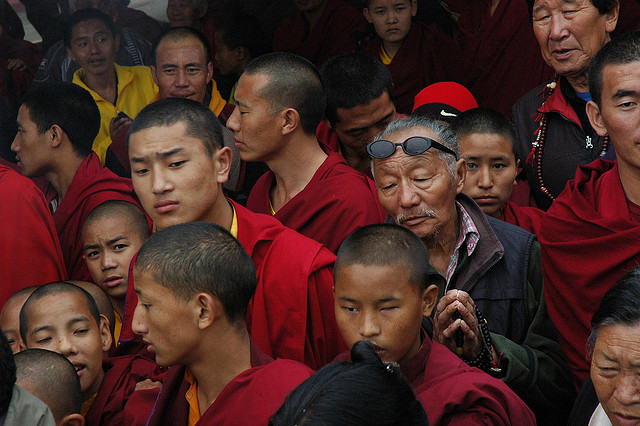Evolving for altitude
Interview with
Modern-day Tibetans may have our ancient ancestors to thank for handing onto them a gene that makes it easier to survive at high altitudes. Scientists at The University of California at Berkeley have found that a gene carried by present-day Tibetans is a direct match with a gene found in an early species of humans called the Denisovans. The signs are that when modern humans left Africa, they picked up the gene  when they interbred with the more primitive Denisovans they encountered along the way, as science reporter Paul Rincon explained to Chris Smith...
when they interbred with the more primitive Denisovans they encountered along the way, as science reporter Paul Rincon explained to Chris Smith...
Paul - Researchers have looked at the genes of Tibetans and found that they have this protective gene against altitude sickness and furthermore found that this gene comes from an extinct species of human that was alive tens of thousands of years ago, but is no longer with us. But we know that our ancestors bred with this extinct group called the denisovans as they came out of Africa about 60,000 to 70,000 years ago.
All they have, all that remains of the denisovans is one very large tooth and one very small finger bone (it's a pinky bone) found in a Siberian cave near the Altai mountains. But because of the good preservation of the tooth and the finger bone, they were able to get very good DNA sequence out of it. The denisovans have been described as a genome in search of a fossil. We don't really know who they were. We've only got these fragmentary remains. But they're so different from both our ancestors and us today, modern people, and also from the Neanderthals that people know they were distinct species. And they probably existed across a wide range of Asia.
Chris - So, these denisovan people had come out of Africa before we turned up and they were there across bits of Asia, and effectively waiting for more modern humans who then came out subsequently and then as you're saying - we now realise - interbred with them.
Paul - That's right. So, there were several waves of people who left Africa about 2 million years ago and after that. We think the denisovan's ancestors probably came out about a million years ago. They moved into Europe and Asia and perhaps Southeast Asia and Oceania. They were probably thriving in that area across a wide range until about 40,000 or 50,000 years ago. And then after that, we don't really know. We don't have a good handle on what happened to them.
Chris - So, what is the gene that the researchers have found has been transmitted between the denisovans and our ancestors, and subsequently our modern Tibetans?
Paul - Yes. Well, the gene is called EPAS-1. It has a variety of functions, but it mainly affects the molecule, haemoglobin in the blood, the oxygen-carrying molecule. The variant that's in Tibetans causes a range of responses when the body is exposed to hypoxia - essentially low oxygen. Now, in people who aren't adapted to high altitudes, what will happen generally when we go up to high altitudes is that we'll produce a lot more red blood cells. But what we tend to do is we produce too many of them. We over compensate for the hypoxia, the low oxygen levels at altitudes. This can place us at risk of altitude sickness, if over an extended time, stroke, and in pregnant women, pre-eclampsia. But in Tibetans, the variant they have of this gene doesn't produce as much of the red blood cells. So, their blood remains thinner at high altitudes. So, they're better able to cope than perhaps other populations.
Chris - So, do we think that the denisovans all had this particular gene variant? Or do you think that just some evolved to have it and then those modern humans who happen to overlap with the denisovans in that area inherited it because it gave them the same advantage that it would've given the more primitive denisovan humans who were living there?
Paul - It's a very interesting question and we've only got one denisovan genome. So, it's unclear whether this was widespread through the denisovan population, or whether it was just there at low levels, waiting to be acted on by natural selection, which it clearly has been in Tibetans. Denisova cave isn't that high. It's about 760 meters above sea level, but it is near the Altai mountains. It's surrounded by mountains that are much higher and go up to much higher altitudes. So, it's possible that there was an adaptation in the particular denisovan population that was living there. We certainly know that other people who passed through the area and are part of the same ancestral group that perhaps contributed to Tibetans today don't have those genes. Those people also lived at high altitudes. For example, some of the peoples in America don't have this gene, yet live at high altitude areas in the Andes and so on, and have adapted in different ways. So, it's unclear why this gene first passed only into Tibetans.









Comments
Add a comment